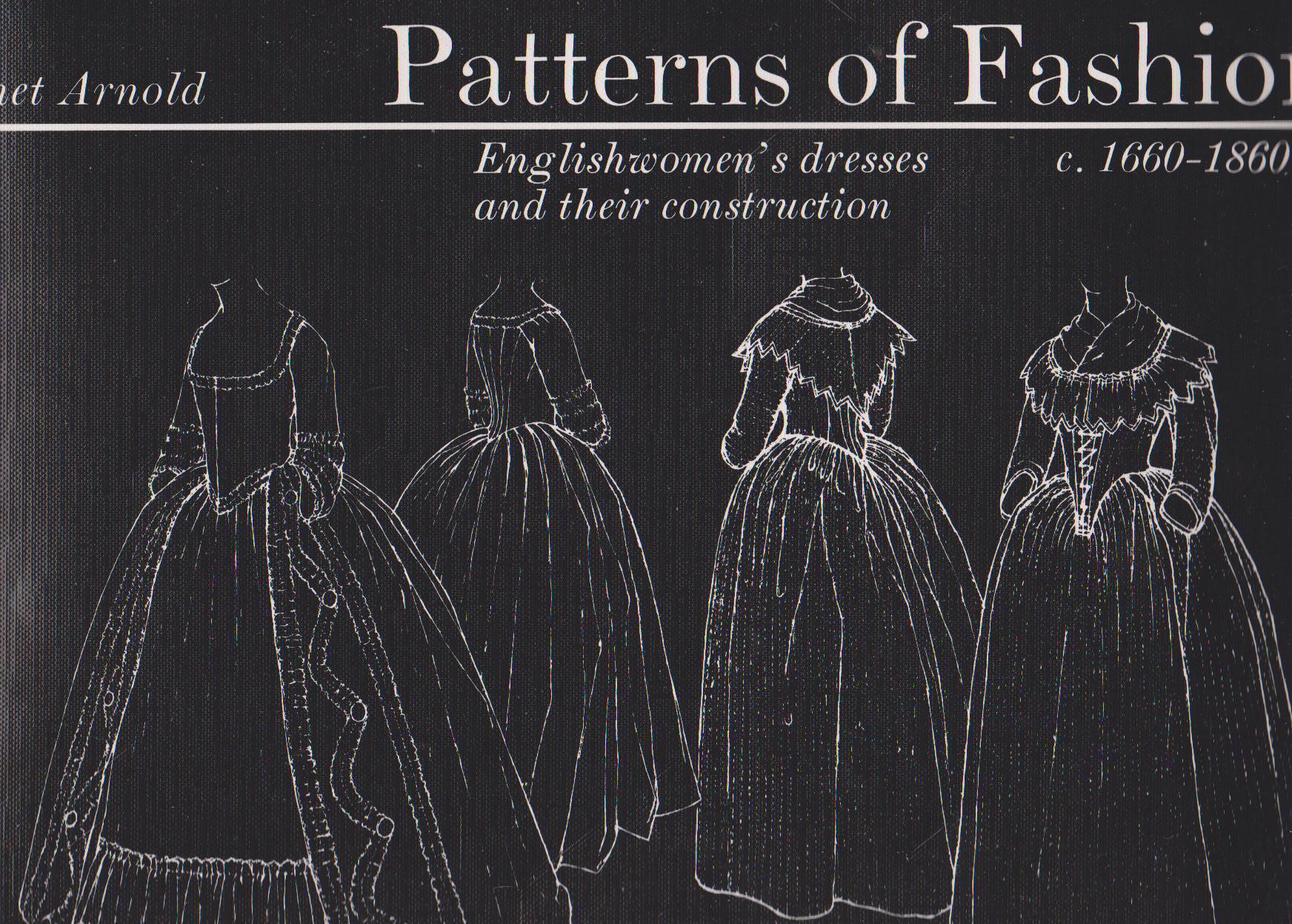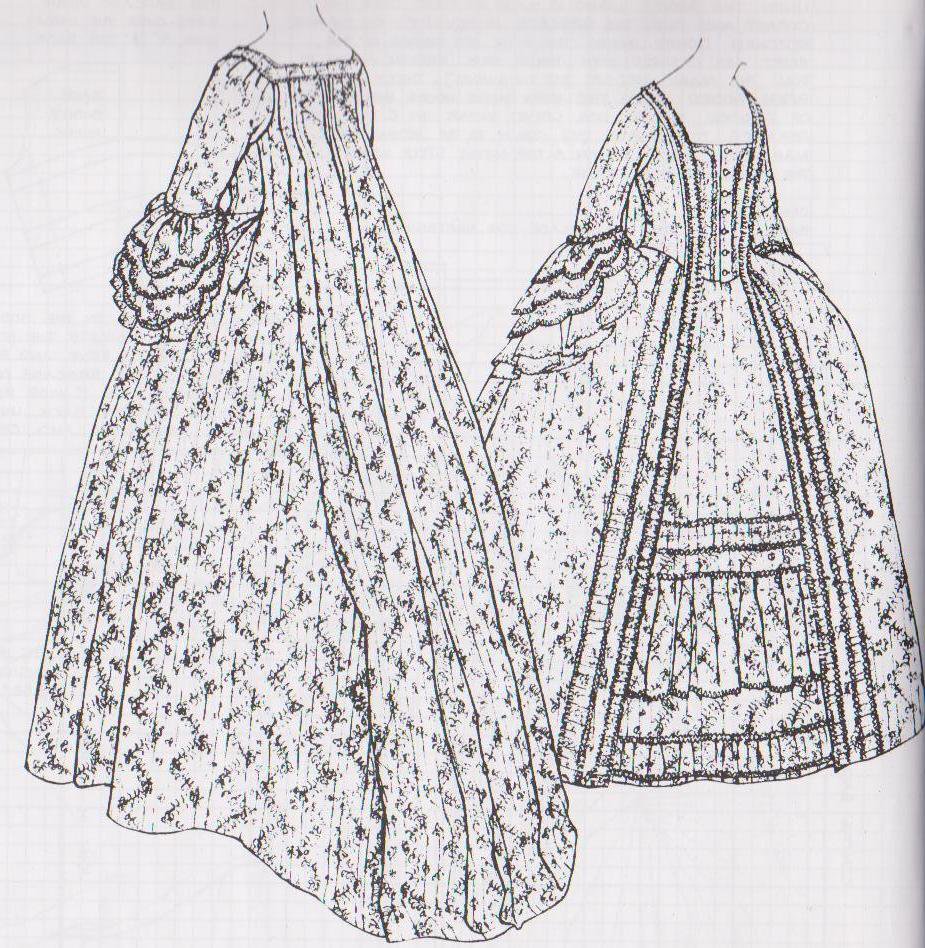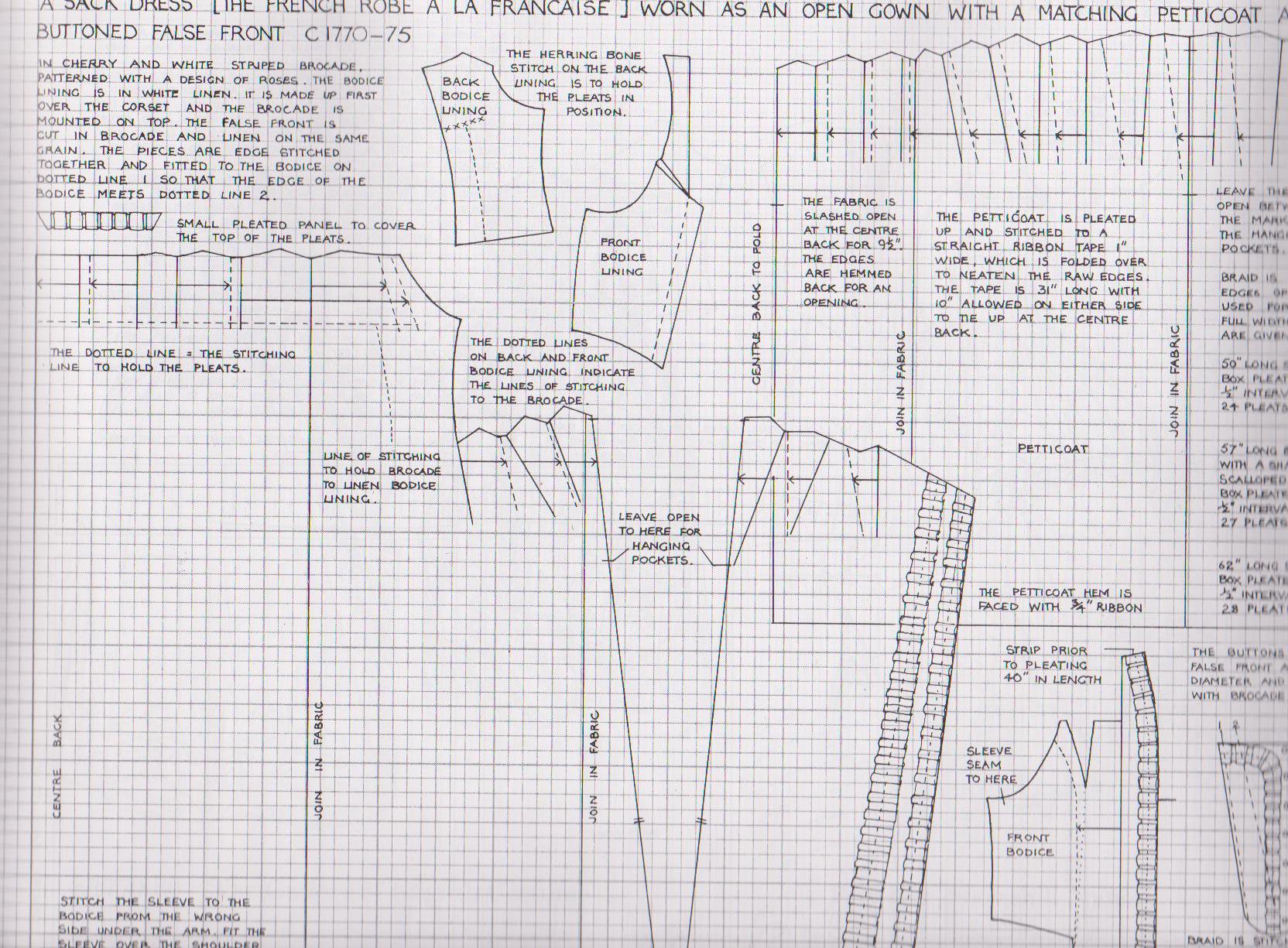Janet Arnold Patterns of Fashion 1
Patterns of Fashion:
By Janet Arnold.
You've probably already got this book. I think anyone with the mildest of interest in Historical Costuming has this volume. Needless to say information technology is wonderful and is no amend than when you're mid pattern cutting and need to reference a item and run across how things were cutting.
There is included here only a glimpse into the volume, concentrating on one pattern and one working drawing but hope it gives you a taster as to what to look if y'all bought this book.
Front Folio:

The next image is one that we ourselves accept been working on and already features in our blog. We accept used it as a base for our Robe a la Francais in the Maroon Taffeta and it is a working cartoon from a dress in the Snowshill Drove. Please see page.34 for more than details.
A Section of Page 34:

The to a higher place is interesting. J.Arnold describes it on the following page equally: 'A Sack Clothes (the French Robe A La Francais) Worn equally an Open Gown With a Matching Petticoat and a Compere or Buttoned False Front c.1770-75'. So, the term 'Open up Robe' only means that the gown splits open at the forepart to display a petticoat – easy! The term petticoat is as it is today and was back then: the nether skirt. Our modern 24-hour interval term however implies that it shouldn't be seen but in the 18th century it meant an under skirt, seen or unseen – again, adequately clear. The interesting bit comes with this word 'Compere'. Now in french it ways 'Friend'. In that location is not often reference to using the word 'Compere to mean a stomacher or possible 'buttoned stomacher' then information technology'southward hard to know where this term comes from. Information technology could exist that the stomacher is of a matching set to the apparel – ergo 'friend'. This has information technology's down fall as the petticoat as well matches and is not referred to as 'Compere'. Alternativly, it could take it's roots in the fact that considering information technology'due south buttoned up there are two halves made for each other – it could exist described as the Button half having information technology'southward companion in the Button pigsty half – are yous following! It might be a gimmicky term from the 18th century or just something Janet Arnold picked up in her lifetime. At the moment we don't know. Simply: more enquiry is needed!
Next is the Blueprint folio for the above dress. The book is really elongated book and not all of it tin can be fitted into the scanning machine then we apologise that it is not all hither. You will simply have to buy the book!
Page 35:

Adjacent is another image that we have used in the designing of out Robe a la Francais and information technology is the inside detail of a Sack Dress from the V&A, dated 1745-55. The clothes itself has very broad side hips and nosotros used this equally a reference to the folding techniques that were used at the ends of the hips. Nosotros also used it for the draw cord that it had running forth the top seam which meant that the skirts could be pulled in to fit smaller hoops. We liked that; nosotros though information technology was a very good thought.
Page 32:

The patterns are based on 1 10 square per 1″. Which is ingenious really.
The book doesn't merely focus on laying out patterns for original gowns – in the opening affiliate, Janet Arnold has written an immense amount of her research down looking into the progression of style and mostly the development of techniques. She quotes from manuals dating as early on as 1660, listing gimmicky terms, letters from the 18th century. She uses Diderot and Garsault, engravings and newspapers – it's incredible. Information technology'southward most of the same use and value as the patterns. For example, on p.4 she quotes from a letter of the alphabet from Lady Suffolk where she writes that she has sent a 'little young lady' (a doll!) dressed in 'courtroom apparel, which I desire you lot would prove to the queen and when she is done with it, permit Mrs Storm accept information technology'. Mrs Tempest was a courtroom milliner. It's merely fascinating. There are also 3 fabled engravings on p.7 which give you such a season of the Tailoring world. I is an engraving from Garsault'southward 'L'Art Du Tailleur' and details a man taking measurements, ladies sewing by a window and another homo cutting out patterns.
0 Response to "Janet Arnold Patterns of Fashion 1"
Post a Comment